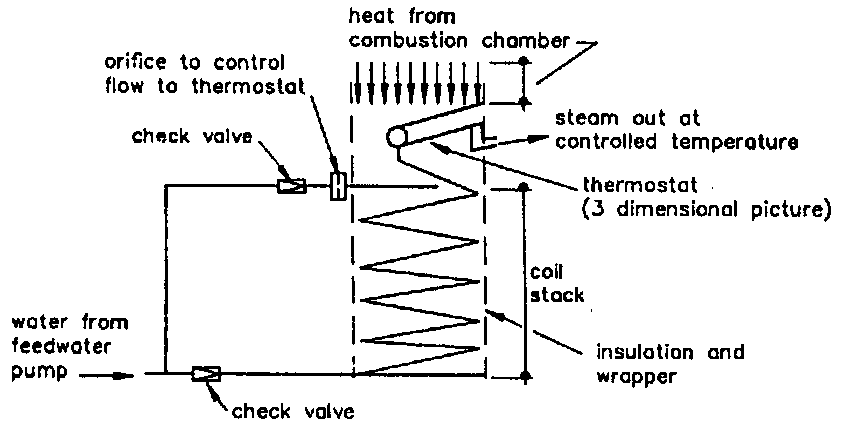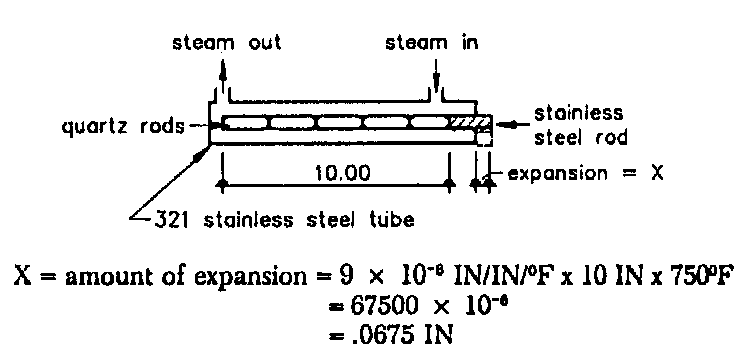Temperature Control
The temperature control equipment described in this article controls steam temperature by turning the feedwater pump off and on when required. The feedwater pump is belt driven by the engine whenever the electric clutch is engaged between the engine and feedwater pump.
A quartz thermostat and relay is used to engage and disengage the electric clutch when the control temperature is reached by the thermostat.
When the feedwater pump is turned on, water is pumped into the bottom of the coil stack and also into the thermostat. The flow rate to the thermostat is controlled by an orifice. The water-flow circuit to the thermostat is called the normalizer. If the normalizer circuit is not used, and feedwater is pumped only into the bottom of the coil stack and, by the time the water level in the coil stack rises high enough to cool off the thermostat and turn off the pump, too much water will have been dumped into the coil stack. The temperature will overshoot the control point by 100° F. before the feedwater pump is turned off.
The normalizer prevents the overshoot by cooling off the ther- mostat and turning off the pump when a small amount of water is pumped into the coil stack. If the normalizer is working properly, the pump will stay on for only two seconds and stay off until the temperature rises to the control temperature. At the present time, temperature is controlled 750° ± 10 F. on the Barrett Steam Car.
The following diagram shows the flow circuit for the temperature control system:

Drawings for the thermostat were published on page 21 of the February, 1987 issue of MODELTEC. The outer tube of the thermostat is made of 321 stainless steel which has a coefficient of expansion of 9 x 10-6 in/in/degrees F. The quartz rods have a coefficient of expansion of zero. So the outer tube expands relative to the quartz rods and this motion is used to turn the pump off and on.
Let us calculate the amount of expansion (X) available to turn the pump off and on:

This page powered by